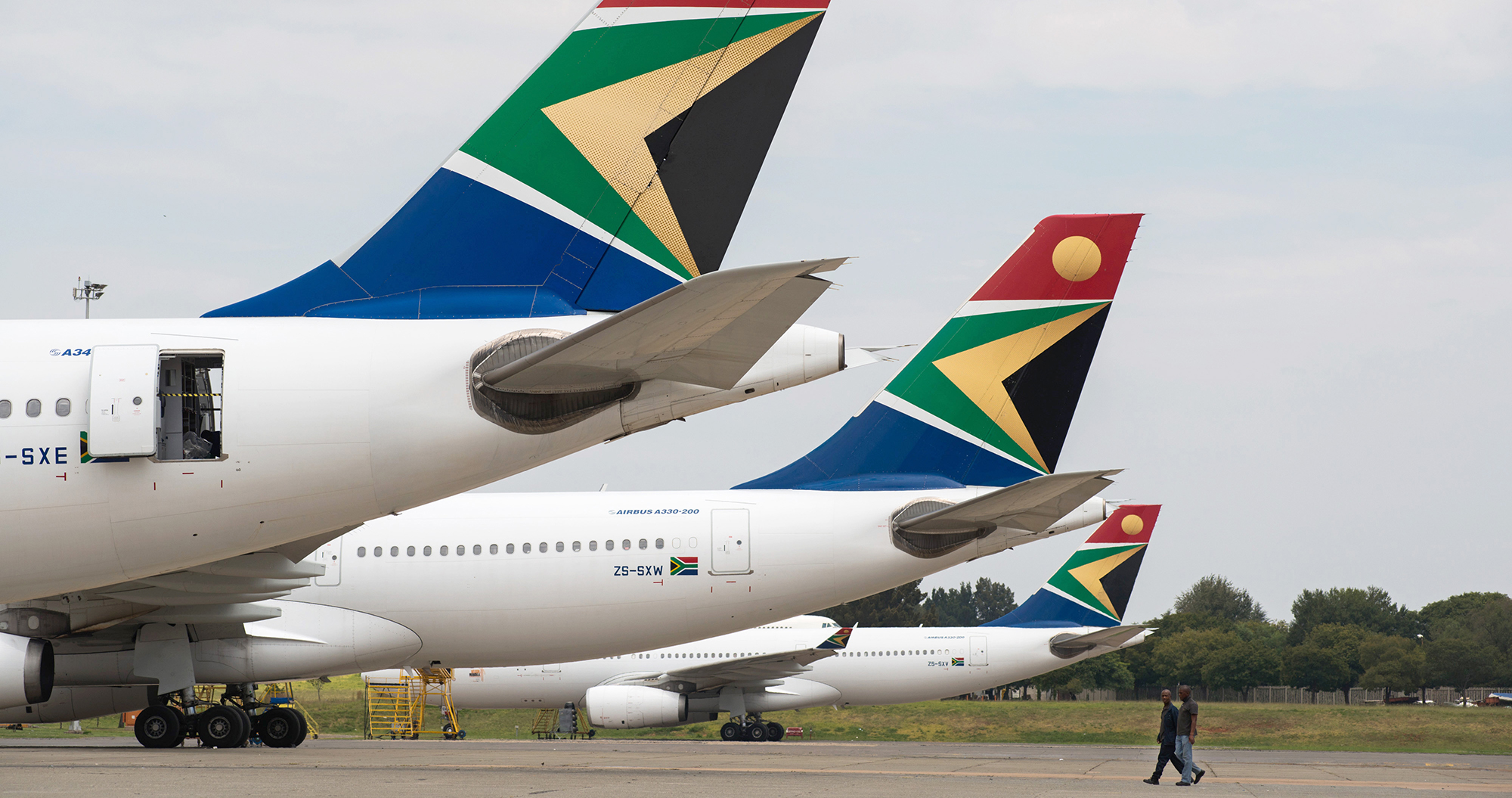SAA interim CEO John Lamola says that SAA version 2.0 may now not need an equity partner.
“If we don’t get one, we can still have the airline we have now, but with a maximum of 20 aircraft. But if we want to move up to an airline with 30 to 35 new aircraft, then we will need a strategic equity partner, preferably an airline, to partner with,” said Lamola on the sidelines of the International Air Transport Association’s annual general meeting in Dubai.
As a state-owned carrier, there must be pressure to fly routes that are politically desirable but unprofitable. Lamola says he frequently gets asked: “Why not London? New York? Mumbai? China?”
He says what drives the airline’s current route strategy are the following questions: “What do we need to break even operationally? How many aircraft, flying what routes?”
SAA’s current fleet plan runs from 2022 to 2029, but the airline had to revise that after the Takatso deal fell through.
Read more in Daily Maverick: SAA privatisation deal reaches the end of the runway but fails to take off
“We are flying on our own now, with the expectation that when we start a [new] route, it must pay for itself. We will not start a route for vanity.”
Given Boeing’s ongoing troubles, would he consider buying Boeings?
“As SAA is the national carrier, we have to be friendly to both Airbus and Boeing. We cannot be beholden to one industry, in case there are, for example, sanctions against Boeing. I was in Seattle last year and everybody raised an eyebrow. But we also talked to Airbus about what we’re doing. We presented them with our roll-out strategy for the coming five years; that, for instance, we will fly to London in 2027.”
Is that still the plan? Lamola is noncommittal. “Perhaps that no longer makes sense because the competition is too fierce. We’re doing continuous research on all routes. I have business cases for Germany, London and Nairobi, which we are refreshing all the time.”
On SAA having recently restarted its Johannesburg-Perth route, Lamola admits: “Our frequencies are terrible [too infrequent], and we need new aircraft. So we are partnering with Singapore Airlines to operate Sydney on a codeshare.”
Lamola says one of the airline’s key challenges is a skills shortage.
“We need to benchmark SAA to world standards in the quality of our management. Because of the business rescue process, we have not been able to recruit the best skills for route analysis. Fortunately, there is now technology that analyses data on how our competitors are doing on those routes, and we can extrapolate that.
“We gave Boeing and Airbus the London route to analyse and they flew in route analysis teams. In the end, we said, ‘Thanks, but we’re not ready’.”
Low-cost capital
Getting access to low-cost capital is a key input, which requires a strong balance sheet and credit record. Lamola says that the credit record of the new SAA is good because it doesn’t have any debt.
“The lessors [of aircraft] look at cash flows and at our payment record. SAA version 2.0 has never skipped one payment on our current leases, so we have a good credit record.”
Much of SAA’s balance sheet is in its property holdings.
Lamola explains: “We now have a property strategy with new leases. Additionally, we are getting paid for leasing out our Heathrow slots. The banks understand the difference between commercial property and aeronautical property. So they are willing to give us a R1-billion facility.”
“Although we don’t have debt, we need a cash buffer. If there’s another pandemic and we are grounded for six months, we must be able to pay salaries for those six months.”
Read more in Daily Maverick: SAA clings to hope that its private sector investment plan will fly
Lamola acknowledged that it would not be easy for SAA’s current revenues to fund that cash buffer.
“At the moment we still have a high cost structure because of the aircraft leases and our exposure to forex.”
SAA has been using expensive “wet” leases to hire Boeing 737-800s from Turkish Sun Express. Lamola is comfortable with this, saying, “These leases provide schedule stability and are good for our passenger loyalty programme. When you are running a scheduled airline, you have to decide if it is better to have cancelled flights or to operate flights at a loss – which we cannot afford.”
Qatar Airways recently announced that it would partner with an airline in southern Africa. When asked if that was SAA, Lamola replied: “No it’s not us. It’s a mystery – rumour has it that it’s TAAG [an Angolan state-owned airline]”.
Finally, SAA is still searching for a permanent CEO. So, has Lamola thrown his hat into the ring for that position?
“There is an automatic assumption that the incumbent will do so. But it’s a terrible job, so I’ll be happy to go back to academia.” DM
Guy Leitch is editor of SA Flyer and FlightCom magazines.





